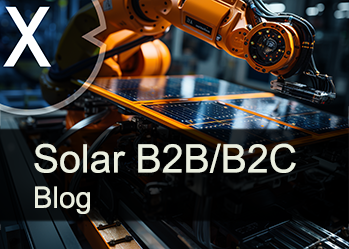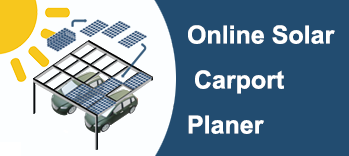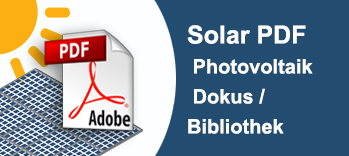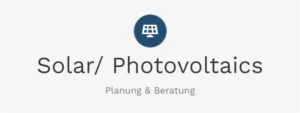The electricity grid infrastructure as a bottleneck in the energy transition: challenges and solutions
Xpert pre-release
Language selection 📢
Published on: August 25, 2025 / Updated on: August 25, 2025 – Author: Konrad Wolfenstein

The power grid infrastructure as a bottleneck in the energy transition: Challenges and solutions – Image: Xpert.Digital
Power grid at its limit: Why Germany's energy transition is stalling and which clever solutions can help now
### Traffic jam on the power highway: Thousands of solar systems waiting to be connected – is the energy transition at risk of a blackout? ### The ingenious trick for the power grid: How "overbuilding" saves billions and brings solar parks online immediately ### Your 2025 electricity bill: Who will benefit from the new grid regulations and who will soon pay the price ### Smart grids instead of expensive cables: How digital technology is revolutionizing grid expansion and reducing costs ###
From North to South: Why our power grid is becoming a bottleneck and how virtual power plants can prevent collapse
The energy transition in Germany is progressing at an impressive pace with the expansion of solar and wind power plants, but its success hangs on a thread: the outdated power grid infrastructure. What once served as the reliable backbone of the energy supply is increasingly becoming the biggest bottleneck in the transformation. The fundamental problem lies in the system change: away from a few, centralized large-scale power plants to thousands of decentralized, weather-dependent generators. The grids, which were designed for a one-way street from the power plant to the consumer, are not equipped for this volatile two-way traffic.
The consequences are already dramatic: Grid operators like Bayernwerk are reporting connection requests for renewable energies in excess of 60 gigawatts, but are unable to meet them. In many places, the grids are at their capacity limits, leading to waiting times of five to fifteen years for new solar parks to be connected. The situation is exacerbated by the well-known north-south divide, where a surplus of electricity is created in the windy north that is unable to reach the industrial centers in the south. Entire streets are already being declared "no longer connectable," bringing the solar boom to a local standstill.
However, this enormous challenge requires more than just the expensive and lengthy construction of new lines. Innovative and intelligent approaches are needed to use existing infrastructure more efficiently and shape the energy system of the future. These range from smart grids that coordinate generation and consumption in real time, to virtual power plants that combine thousands of small systems into a large swarm, to clever concepts such as the "overbuilding" of grid connections and the proactive "feed-in socket." These solutions promise not only to accelerate the energy transition but also to keep the exploding grid expansion costs and thus electricity prices for consumers in check. The following text highlights the most pressing bottlenecks and presents the most promising solutions that will determine the success or failure of the German energy transition.
Suitable for:
- The currently most important cable in Germany: The “Suedlink” electricity highway is one of the most important projects in the German energy transition
Why is grid infrastructure a critical factor for the expansion of renewable energies?
The grid infrastructure forms the backbone of a successful energy transition and, at the same time, represents its greatest bottleneck. The problem lies in the fundamental change in the energy system: While large, centralized power plants used to produce electricity in a predictable manner, which was then transported to consumers via the grid, today decentralized and volatile renewable energy sources dominate.
Large-scale solar farm projects require strong grids capable of handling their feed-in power. However, many grids are already operating at their limits and cannot accommodate any additional capacity. Bayernwerk, for example, reports requests for connections for over 60 gigawatts, with many grid operators already reporting waiting times of 5-15 years for new connections.
The challenge is exacerbated by the north-south divide in Germany: In the north, more electricity is generated through wind power than is consumed, while the south, with its industrial centers, requires more energy than is produced locally. This problem will become even more pronounced following the nuclear and planned phase-out of coal power.
What specific bottlenecks exist when connecting solar parks to the grid?
The practical problems associated with connecting solar parks to the grid are complex and affect all voltage levels. At the medium-voltage level, where most ground-mounted photovoltaic systems between 10 and 60 MW are connected, the grids are already heavily utilized in many places. High-voltage grids offer even greater capacity, but require the costly construction of dedicated substations.
A concrete example is the situation in Klettgau, Baden-Württemberg, where the local grid operator EVKR has published a list of streets where "it is highly unlikely that any new photovoltaic systems will be connected." Such grid bottlenecks mean that even solar systems already installed cannot be connected to the grid.
The distribution system operators' grid expansion plans show that many areas of the medium- and high-voltage grids are designated as "bottleneck regions." This leads to longer connection times, with some projects only being able to be connected to the grid after 2030, as the local grid infrastructure must first be expanded.
How are network charges developing and what impact does this have?
Grid fees, which account for about a quarter of the electricity price, are showing a mixed trend. The four major transmission system operators have announced an average increase of 3.4 percent to 6.65 cents per kilowatt hour for 2025. This increase is primarily due to the enormous investments in grid expansion.
At the same time, the nationwide standardization of grid fees in 2025 will lead to a fairer distribution of costs. Regions with high levels of renewable energy expansion will benefit: In Schleswig-Holstein, grid fees will decrease by 29 percent, in Mecklenburg-Western Pomerania by 29 percent, in Brandenburg by 21 percent, and in Bavaria by 16 percent.
This redistribution takes into account the fact that regions with many renewable energy plants have so far had to bear disproportionately high grid expansion costs. At the same time, grid fees are rising in regions with a lower share of renewable energy, particularly in Baden-Württemberg, Rhineland-Palatinate, and North Rhine-Westphalia.
What are smart grids and how can they contribute to the solution?
Smart grids, or intelligent power grids, use digital technologies to coordinate power generation, grid operation, storage, and consumption. Unlike the traditional power grid, which operated as a one-way street from the power plant to the consumer, modern grids must reliably manage bidirectional energy flows and unpredictable feed-ins.
A smart grid connects all components of the electricity system—from rooftop solar panels to basement battery storage and e-mobility charging stations. With the help of digital electricity meters and modern communication technologies, these systems can respond to changes in real time and optimally balance supply and demand.
Battery storage systems play a central role as integral components of modern grid infrastructure. They stabilize the grid by balancing short-term fluctuations, enable congestion management, and increase the flexibility of the overall system. Targeted intermediate energy storage can prevent grid congestion and reduce the expansion of expensive grid infrastructure.
Suitable for:
What role do virtual power plants play in the future energy system?
Virtual power plants represent an innovative solution for better integration of renewable energies. They connect hundreds or thousands of decentralized generation plants, storage facilities, and controllable consumers into a coordinated network. These swarm power plants can collectively produce as much electricity as large conventional power plants.
The central control system of a virtual power plant monitors all connected plants in real time and reacts lightning-fast to changes in the power grid. If production is too low, it switches on additional renewable energy generators that can be controlled independently of the weather—such as biogas plants or hydroelectric power plants. In the event of overproduction, it throttles feed-in accordingly.
Modern virtual power plants utilize smart meter gateways for cost-effective control of small-scale plants. They not only enable better system integration of renewable energies but also create economic added value for plant operators through optimized marketing across multiple markets.
What is overbuilding and how can it reduce grid congestion?
The construction of grid connection points represents a promising approach for more efficient grid use. This involves connecting power plants to the grid that can collectively produce more electricity than the lines are theoretically capable of transporting. The key point is the combination of power plants, which rarely operate at full capacity at the same time.
Wind and solar systems complement each other perfectly: Wind turbines often generate their main output at night and in the fall or winter, while solar systems generate their main output at midday and in the summer. A study by the German Renewable Energy Association shows that when operated jointly on a single grid, only around 3.5 percent of solar power and 1.5 percent of wind power need to be curtailed.
Bayernwerk has already demonstrated how this development works: A new PV system was installed next to an existing wind turbine on the same grid connection. Both systems are operated jointly, saving all parties involved and consumers the costs of additional grid expansion. The potential is significant: In the Bayernwerk grid alone, the planned 1,000 new wind turbines would be possible by 2030 by building over existing PV connections.
How does the feed-in socket concept work?
The feed-in socket represents a paradigmatic shift in grid connection planning. Instead of the infrastructure lagging behind renewable energy plants, additional capacity is proactively provided for which project developers can apply.
Using this approach, Bayernwerk installed a grid connection in Lower Bavaria, for which developers of renewable energy plants could apply. Within 24 hours, almost all capacity was allocated, despite the 30 percent peak capping requirement. This significantly improves line utilization and dramatically accelerates projects: from groundbreaking in March to commissioning in November of the same year.
LEW Verteilnetz and Bayernwerk Netz have further developed their joint "Feed-in Socket" pilot project, in which both companies independently create additional connection capacities at their substations. Bayernwerk is planning a new substation in Niederviehbach, while LVN is equipping the existing substation in Balzhausen with an additional transformer.
New: Patent from the USA – Install solar parks up to 30% cheaper and 40% faster and easier – with explanatory videos!

New: Patent from the USA – Install solar parks up to 30% cheaper and 40% faster and easier – with explanatory videos! - Image: Xpert.Digital
At the heart of this technological advancement is the deliberate departure from conventional clamp fastening, which has been the standard for decades. The new, more time- and cost-effective mounting system addresses this with a fundamentally different, more intelligent concept. Instead of clamping the modules at specific points, they are inserted into a continuous, specially shaped support rail and held securely. This design ensures that all forces occurring—be they static loads from snow or dynamic loads from wind—are evenly distributed across the entire length of the module frame.
More about it here:
Digital Infrastructure: How AI and Smart Grids are Transforming the Power Grid
What potential does making the energy system more flexible offer?
Flexibility in the energy system describes the ability to balance fluctuations between generation and consumption and ensure the stability of the power supply. With the goal of 80 percent renewable electricity generation by 2030, the energy system must become flexible enough to secure supply even with low nighttime electricity production.
This flexibility can be provided by various components: electricity storage, controllable loads, and flexible power plants. The potential of small-scale systems such as decentralized solar systems, battery storage, electric cars, and heat pumps is particularly promising. If Germany has millions of electric cars in the next few years, 8,000 megawatts of flexibility will quickly be available.
Spatial flexibility allows for the balancing of geographical fluctuations, for example, in Germany's well-known north-south bottleneck. Temporal flexibility compensates for seasonal and daily fluctuations. Smart energy management solutions are becoming the digital infrastructure for the energy sector of the future and can make decisions in real time.
Suitable for:
What does sector coupling mean for grid load?
Sector coupling describes the linking of the previously separate sectors of electricity, heat, transport, and industry through increased use of renewable electricity. This development leads to a significant increase in electricity consumption and simultaneously changes the load profiles in the grid.
The German Renewable Energy Association (BER) forecasts additional electricity demand from sector coupling of between 69 and 150 TWh for 2030. It sees the highest demand for electromobility at up to 48 TWh, followed by heat pumps at 41 TWh, hydrogen production at 37 TWh, and industrial electric boilers at 21 TWh.
This development poses new challenges for the power grid: When many households simultaneously charge their electric cars after work, new peak loads arise. Heat pumps can replace oil and gas boilers, but they require a reliable power supply. Intelligent control of these new consumers will be crucial for grid stability.
How can forward-looking grid expansion solve the problems?
Proactive grid expansion represents a fundamental paradigm shift in grid planning. Instead of reacting only when concrete facilities are planned, the grid infrastructure should be proactively expanded to meet future needs.
The problem with the current system lies in the different implementation times: Renewable energy plants can be implemented in five months, while grid expansion takes seven to ten years. This time discrepancy leads to significant problems in the connection and transmission of renewable energy.
The Association of Municipal Utilities is calling for a regulatory framework that enables forward-looking grid expansion. Six key conditions must be changed: the backward-looking nature of regulatory practice must be overcome, forward-looking budget planning must be introduced, and regulatory hurdles for proactive investments must be reduced.
The first publication of grid expansion plans by approximately 80 major German electricity distribution system operators in May 2024 was an important step. These plans describe concrete planned expansion measures for 2028 and 2033, as well as estimates of expansion needs up to 2045.
What role does digitalization and automation play?
Digitalization and automation of the power grid are essential for the successful integration of renewable energies. Modern automation systems enable real-time monitoring and optimization of energy flows. Demand-based automation is particularly necessary in low- and medium-voltage grids, where over 90 percent of renewable energies are connected.
Digital twins of distribution grids create a single, reliable source of information for grid operators by combining diverse data sources such as smart meters, GIS, ERP, and SCADA systems. These computational grid models can respond dynamically to events such as changing weather conditions or loads.
In the future, software solutions for grid condition forecasts using artificial intelligence will operate based on real-time data-fed grid models with customized load profiles. Decision-support programs can recommend measures based on identified bottlenecks and their time horizons.
The VDE study on high automation shows that active grid operation allows more photovoltaic systems and electric vehicles to be integrated into the grid more quickly, as the power flow can be influenced as needed. Automation also enables automatic power restoration in the event of outages and better utilization of existing grid capacities.
What economic impact do these solutions have?
The economic impact of the various solutions is significant, affecting both the costs and the efficiency of the overall system. According to a study by the Energy Economics Institute, overlaying grid connections with photovoltaics and wind power can reduce grid expansion costs by up to €1.8 billion annually.
Although more plants would have to be curtailed during the development, the savings in grid expansion costs would exceed the costs of curtailed electricity by €800 million. This net efficiency gain is generated by significantly reduced investments in new grid infrastructure with only slightly higher curtailment costs.
The investment required for European grid expansion by 2050 is estimated at between 1994 and 2294 billion euros. According to various studies, an average of 350 billion euros will be required for distribution grid expansion in Germany alone by 2045. These enormous sums underscore the need for efficient solutions.
At the same time, improved grid utilization leads to lower specific costs: The more electricity is transported through the grids, the more evenly the grid costs per kilowatt hour are distributed. The combination of urban development, smart grids, and grid-friendly storage can make the system more efficient and reduce the overall costs of the energy transition.
How can policy and regulation support the transformation?
The political and regulatory framework is crucial for the successful expansion of the grid infrastructure. The "Act Amending Energy Industry Law," passed in January 2025, has already set important groundwork by creating the legal basis for grid expansion.
With the amendment to Section 8 of the Renewable Energy Sources Act, EEG plants can now be connected to a grid connection point already used by another EEG plant. The new Section 8a EEG also allows for flexible grid connection contracts, which are necessary for the practical implementation of cable pooling.
Accelerating planning and approval procedures is another critical factor. Grid operators are demanding more administrative decisions in a shorter timeframe, as 12 wind turbines would have to be built and integrated into the grid every day to achieve climate targets. To achieve this, planning and approval authorities, as well as courts, must be better staffed and resourced.
The legal priority given to renewable energies in the Renewable Energy Sources Act 2023 also means priority for distribution grid expansion. Synergies in nature conservation assessments must be utilized, parallelism in the approval process must be enabled, and the status of existing laws must be frozen at the beginning of the procedures.
Suitable for:
- When large solar system projects threaten to fail due to the grid compatibility assessment (NVP). What should politicians do about it?
Which technological innovations will shape the future?
Several technical innovations will significantly shape the future of grid infrastructure. High-voltage direct current transmission lines enable the low-loss transport of large amounts of electricity over long distances and are particularly relevant for Germany's north-south divide.
Power-to-X technologies open up new possibilities for sector coupling: Power-to-Heat can use electricity to generate heat, while Power-to-Gas enables the conversion of electricity into hydrogen. These technologies can serve both as flexibility options and as long-term storage solutions.
Intelligent measurement and control technology will become the foundation for all other innovations. Smart meter gateways enable the cost-effective control of small systems and the integration of private households into virtual power plants. The widespread introduction of this technology is a prerequisite for the complete digitalization of the energy system.
Artificial intelligence and machine learning are increasingly being used for grid condition forecasting, load forecasting, and automated decision-making. These technologies make it possible to manage the complexity of the future energy system and optimally control it.
What challenges remain?
Despite promising solutions, significant challenges remain. The sheer speed of the required grid expansion presents enormous challenges for all involved: planned grid investments must be increased from the current annual level of approximately €36 billion to over €70 billion.
The shortage of skilled workers in the energy sector is further exacerbating the situation. At the same time, supply bottlenecks for transformers, cables, and other grid components are leading to further delays. These supply chain bottlenecks can slow down the entire grid expansion, regardless of available financial resources.
Coordination between the various actors—transmission system operators, distribution system operators, generators, and consumers—remains complex. Any delay in one component of the system can have an impact on the entire system.
The regulatory framework must be continuously adapted as technologies and market conditions evolve rapidly. What is considered optimal today may be obsolete in just a few years. Balancing necessary regulation with sufficient flexibility for innovation remains a challenge.
Public acceptance for the massive expansion of the grid infrastructure must continue to be ensured. Citizen participation and transparent communication are crucial for the successful completion of grid expansion projects.
The electricity grid infrastructure is at the heart of the energy transition and significantly determines its success. Innovative approaches such as overbuilding, smart grids, virtual power plants, and forward-looking planning can overcome existing bottlenecks. A combination of technical innovations, regulatory adjustments, and significant investments will be necessary to make the grid fit for the future. Only in this way can the full potential of renewable energies be unlocked and climate goals achieved.
Look, this little detail saves up to 40% installation time and costs up to 30% less. It's from the USA and patented.

NEW: ready -to -mount solar systems! This patented innovation accelerates your solar construction massively
The heart of ModuRack 's innovation is its departure from conventional clamp fastening. Instead of clamps, the modules are inserted and held in place by a continuous support rail.
More about it here:
Your partner for business development in the field of photovoltaics and construction
From industrial roof PV to solar parks to larger solar parking spaces
☑️ Our business language is English or German
☑️ NEW: Correspondence in your national language!
I would be happy to serve you and my team as a personal advisor.
You can contact me by filling out the contact form or simply call me on +49 89 89 674 804 (Munich) . My email address is: wolfenstein ∂ xpert.digital
I'm looking forward to our joint project.




























